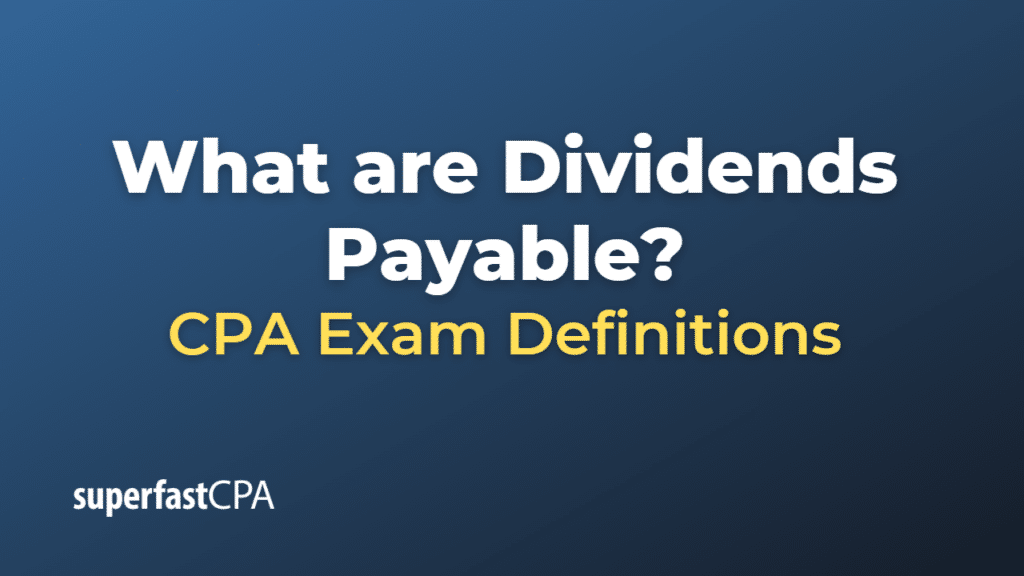Dividends Payable
“Dividends payable” is a liability that appears on a company’s balance sheet representing unpaid dividends that a company owes to its shareholders – the dividends have been declared, but not yet paid.
When a company’s board of directors declares a dividend, the company records a liability for the amount of dividends to be paid. This is recorded in the dividends payable account, which remains as a liability on the balance sheet until the company pays the dividends, typically on the specified payment date.
For example, if a company declares a dividend of $0.50 per share on 1,000,000 shares outstanding, it will record a dividends payable liability of $500,000. This amount is a commitment from the company to distribute this money to its shareholders, and it’s deducted from the company’s cash balance when the dividend is paid.
Keep in mind, the declaration of a dividend is a serious decision by a company because it creates a legal obligation to pay that dividend. The company cannot simply decide to cancel the dividend after it’s declared without serious implications.
Example of Dividends Payable
Suppose the board of directors of Company F declares a dividend of $1 per share on March 15, 2023, to be paid on April 15, 2023, to shareholders of record on March 31, 2023. The company has 1 million shares of common stock outstanding.
Upon the declaration of the dividend on March 15, the company will record a decrease in its retained earnings (which are part of shareholders’ equity on the balance sheet) and an increase in its dividends payable (a liability), each in the amount of $1 million (which is $1 per share * 1 million shares).
Here’s what that journal entry might look like:
March 15, 2023
Debit (decrease) Retained Earnings: $1,000,000
Credit (increase) Dividends Payable: $1,000,000
Then, on the payment date of April 15, when the company distributes the dividends, it will record a decrease in its dividends payable (reducing the liability) and a decrease in its cash balance, each in the amount of $1 million.
That journal entry might look like this:
April 15, 2023
Debit (decrease) Dividends Payable: $1,000,000
Credit (decrease) Cash: $1,000,000
So “dividends payable” represents the amount of declared but unpaid dividends, and this liability exists from the declaration date until the payment date.













